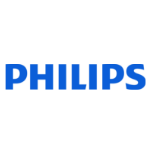Unobtrusive monitoring of health-related parameters in the bed environment
HealthBed develops technologies for unobtrusive medical monitoring of sleeping patients. If patients sleep better while they are monitored, it improves screening, diagnosis, and management of chronic diseases and sleep disorders. HealthBed has set up labs to validate the project’s innovations, in preparation for putting them on the market.
Origins
Existing sleep diagnostics are obtrusive for patients, labor-intensive and costly. Today’s monitoring systems require attaching patients to cables, limiting their mobility and hindering care delivery. Sleep specialists demand unobtrusive solutions for monitoring sleep, and hospitals demand non-contact devices for measuring vital signs that detect complications and help monitor recovery.
Team
The HealthBed project team consists of EIT Health members Philips Electronics Nederland B.V., Rheinisch- Westfälische Technische Hochschule Aachen and Technische Universiteit Eindhoven. The Sleep Medicine Center Kempenhaeghe in the Netherlands participates in the team as an external partner, providing the clinical setting for testing the sleep monitoring technologies.
The project
The HealthBed team spent the first year of this EIT Health Innovation Project advancing the readiness of their innovation: infrared camera-based monitoring technologies for use on sleeping patients. This involved setting up both a bedroom and patient room lab to test and clinically validate the technologies.
The newly formed labs were created in a high-profile sleep medicine center (Kempenhaeghe) and in a geriatric clinic (Franziskus Hospital, Aachen, Germany).
In the second year of the project, the team is collecting data from patients and healthy subjects in the bedroom labs, in order to verify and improve algorithms for geriatric and sleep applications. At the same time, the team is evaluating how well the end-users – sleeping subjects – accept the bedroom lab and adhere to the appropriate routine for use.
The HealthBed bedroom labs now operate continuously to collect data from patients and healthy subjects. The project has produced strong results in real-world settings for monitoring heart rate, breathing rate and snoring. Using the data collected, the team has developed new algorithms that show early promise for use in monitoring heart-rate variability and sleep stages.
Impact
HealthBed benefits patients and society by improving diagnosis of sleep disorders, thereby reducing costs and improving patients’ health. Currently, 50-70% percent of obstructive sleep apnea sufferers remain undiagnosed, and their quality of life and life expectancy suffers as a result. The innovation will help address this problem, and enable general monitoring of vital signs in low acuity hospital wards and senior living facilities, where monitoring is needed but not performed.

Why this is an EIT Health project
EIT Health supports this solution because it improves the experience of patients while addressing sleep problems that can interfere with active ageing.
The solution is also in keeping with these EIT Health Focus Areas:
- “Care Pathways”, by developing a tool to improve diagnosis and monitoring.
- “Bringing Care Home”, by allowing for monitoring in senior living facilities.
External Partner
- Sleep Medicine Center Kempenhaeghe
Members

CLC/InnoStars: Belgium-Netherlands
Partner classification: Education, Research
Partner type: Associate Partner
TU Eindhoven is the world's best performing research university in the field of R&D cooperation between universities and high-tech industry. We focus on translating research results into innovative products and services.
Eindhoven University of Technology
Eindhoven University of Technology, Laplace 32, 5612 Eindhoven, Netherlands


Partner classification: Business
At Philips, our purpose is to improve people’s health and well-being through meaningful innovation. We aim to improve 2.5 billion lives per year by 2030, including 400 million in underserved communities.
We see healthcare as a connected whole. Helping people to live healthily and prevent disease. Giving clinicians the tools they need to make a precision diagnosis and deliver personalized treatment. Aiding the patient's recovery at home in the community. All supported by a seamless flow of data.
As a technology company, we – and our brand licensees – innovate for people with one consistent belief: there’s always a way to make life better.
Philips Electronics Nederland B.V.
Philips Electronics Nederland B.V., Boschdijk 525, 5622 Eindhoven, Netherlands
Key Activities in Corporate Innovation
Med Tech, ICT

CLC/InnoStars: Germany
Partner classification: Education, Research, Tech Transfer, Clusters, Other NGOs, Hospital / University Hospital
RWTH Aachen University and its hospital (focus on patient-oriented medicine & nursing care) provide leading research, innovation and education within the core themes of EIT Health. Our industry-need-driven competence centres foster entrepreneurship
RWTH Aachen University
RWTH Aachen University, Templergraben 55, 52062 Aachen, Germany
Key Activities in Research and Developement
Biomedical engineering, Life Sciences, Social sciences / health economics, Clinical research
Key Activities in Business Creation
Incubation, Technology Transfer, Testing & Validation
Key Activities in Education
Entrepreneurship training, Technical faculties, Medical faculties, Healthcare professional education/training